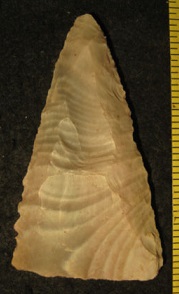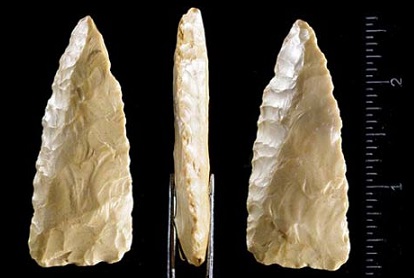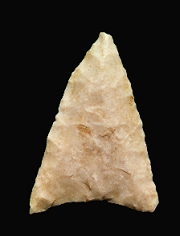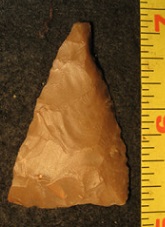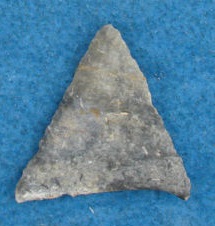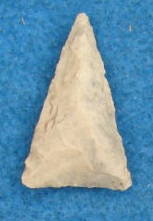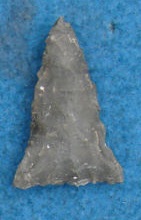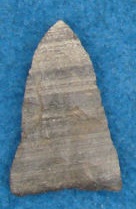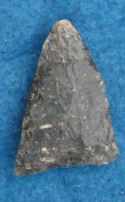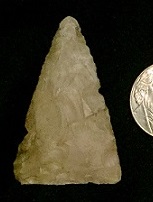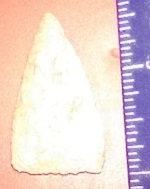Outline is Representative of Size and Shape:

Name Details:
Identifd By: J. Charles Kelley
Named For:
Date Identified: 1947
Type Site: Southwest Texas
Identifd By: J. Charles Kelley
Named For:
Date Identified: 1947
Type Site: Southwest Texas
Point Validity:
Valid type
Kelley was a distinguished anthropologist who served as Curator of the Archaeological Museum at the University of Texas-Austin and was instrumental in setting up the Department of Anthropology at the University of Texas-Austin. He specialized in the archaeology of western Texas. This type was named in a professional publication and has many professional references. This is considered a valid type.
Kelley was a distinguished anthropologist who served as Curator of the Archaeological Museum at the University of Texas-Austin and was instrumental in setting up the Department of Anthropology at the University of Texas-Austin. He specialized in the archaeology of western Texas. This type was named in a professional publication and has many professional references. This is considered a valid type.
Tortugas Triangular
AKA: Baird Beveled Blade (Kelley, 1947)Taylor Thinned Base (Kelley, 1947)
Cluster:
Description of Physical Characteristics and Flaking Pattern:
This is a thick medium to large (typically around 2 inches) triangular point with an elliptical cross section. The blade may vary from straight to slightly excurvate. The blade is generally beveled on alternating edges. Right edge beveling is most common. The midsection of this point is commonly crudely flaked. The base may range from straight to slightly concave. The base is well thinned by removal of short longitudinal flake which may give a fluting like appearance. The bottom 10 to 35 mm of the blade is commonly ground along with the basal edge. This type is formed using primary percussion flaking and then all edges shaped using controlled percussion flaking or pressure flaking leaving a beveled edge and a random flaking pattern.
Size Measurements:
Total Length - 40 to 80 mm (average 55 mm), Width - 20 to 47 mm (average 31 mm), Thickness - 6 to 13 mm (average 10 mm) (Suhm and Krieger, 1954, MacNeish, 1967).
Total Length - 40 to 80 mm (average 55 mm), Width - 20 to 47 mm (average 31 mm), Thickness - 6 to 13 mm (average 10 mm) (Suhm and Krieger, 1954, MacNeish, 1967).
Commonly Utilized Material:
Additional Comments:
Kelly named three points in 1947; Baird Beveled Blade, Taylor Thinned Blade, and Tortugas Triangular Blade. Krieger and Newell used the name Baird and Taylor for examples found at the Davis site in eastern Texas. Further studied by Suhm and Krieger in 1954 found no distinguishable difference between the three types. Suhm and Krieger combined all three points into the type Tortugas was used because it was the name which referred to points found in southwestern Texas where these point are most commonly found (Suhm and Krieger, 1954).
This point is similar to the smaller Matamoros point. The Matamoros point varies form 20 to 40 mm while the Tortugas point ranges from 40 to 80 mm. Large examples of Matamoros that had width outside normal width, would be typed as a Tortugas while small examples of Tortugas that had a width narrower than normal would be typed as a Matamoros (Suhm and Krieger, 1954).
The Matamoros and Catan are newer smaller points while the Tortugas and Abasolo points are larger older points. Matamoros and Catan points are found in association with pottery while Tortugas and Abasolo points are not (Suhm and Krieger, 1954).
Kelly named three points in 1947; Baird Beveled Blade, Taylor Thinned Blade, and Tortugas Triangular Blade. Krieger and Newell used the name Baird and Taylor for examples found at the Davis site in eastern Texas. Further studied by Suhm and Krieger in 1954 found no distinguishable difference between the three types. Suhm and Krieger combined all three points into the type Tortugas was used because it was the name which referred to points found in southwestern Texas where these point are most commonly found (Suhm and Krieger, 1954).
This point is similar to the smaller Matamoros point. The Matamoros point varies form 20 to 40 mm while the Tortugas point ranges from 40 to 80 mm. Large examples of Matamoros that had width outside normal width, would be typed as a Tortugas while small examples of Tortugas that had a width narrower than normal would be typed as a Matamoros (Suhm and Krieger, 1954).
The Matamoros and Catan are newer smaller points while the Tortugas and Abasolo points are larger older points. Matamoros and Catan points are found in association with pottery while Tortugas and Abasolo points are not (Suhm and Krieger, 1954).
Distribution: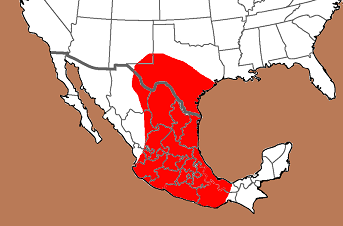

Distribution Comments:
This point is primarily found in the Trans Pecos region, through out the Rio Grande River valley and into the Gulf Coastal regions of Texas and Tamaulipas. Frequency of this point decreases into central Texas and south of the Rio Grande Valley into Mexico. These points have been reported at Santa Marta Cave in Chiapas, Tecolote Cave in Hidalgo, Cueva de la Nopaler a, Michoacan and Guerrero, surface finds in southern Tamaulipas, Tehuacan Valley and the Valley of Mexico. MacNeish (1967) notes that they are generally lacking in western and northwestern Mexico.
This point is primarily found in the Trans Pecos region, through out the Rio Grande River valley and into the Gulf Coastal regions of Texas and Tamaulipas. Frequency of this point decreases into central Texas and south of the Rio Grande Valley into Mexico. These points have been reported at Santa Marta Cave in Chiapas, Tecolote Cave in Hidalgo, Cueva de la Nopaler a, Michoacan and Guerrero, surface finds in southern Tamaulipas, Tehuacan Valley and the Valley of Mexico. MacNeish (1967) notes that they are generally lacking in western and northwestern Mexico.
Age / Periods:
Date: 4,500 - 2,600 B.P.
Cultural Period:Middle to Late Archaic
Glacial Period: Neoglacial
Culture:
Date: 4,500 - 2,600 B.P.
Cultural Period:Middle to Late Archaic
Glacial Period: Neoglacial
Culture:
Age Details:

